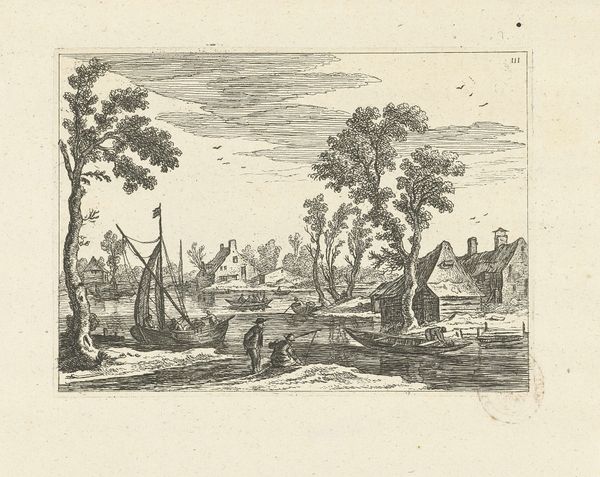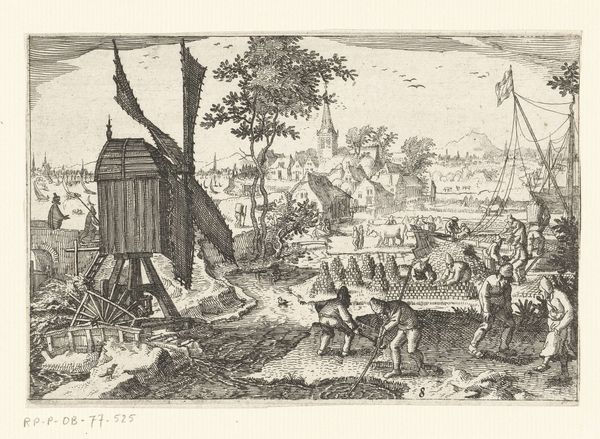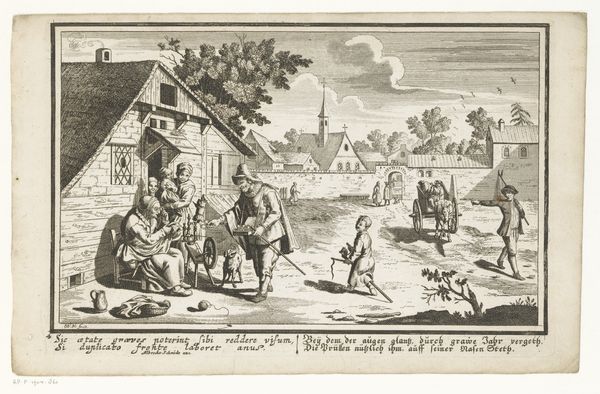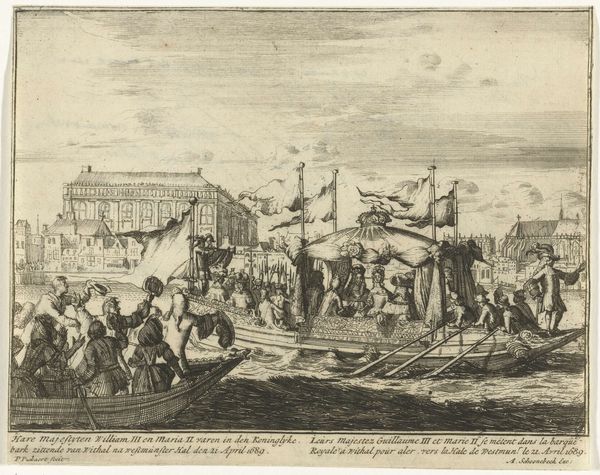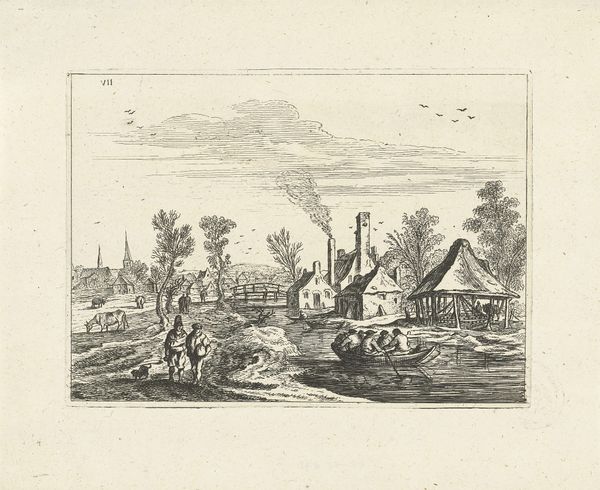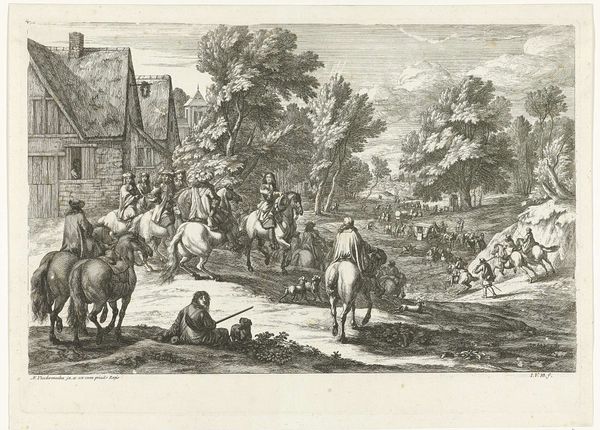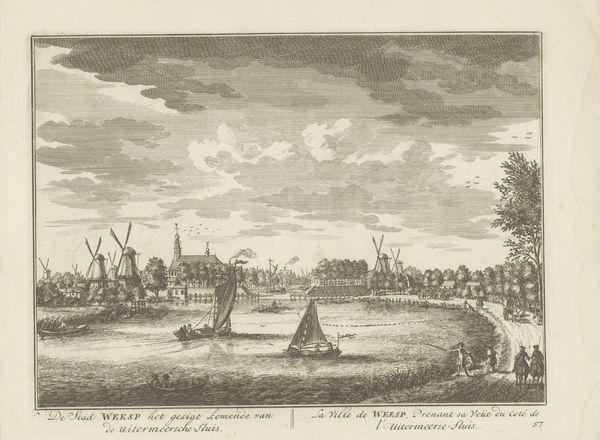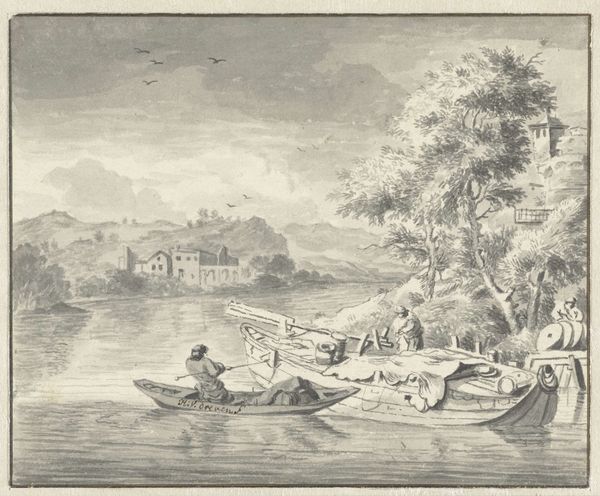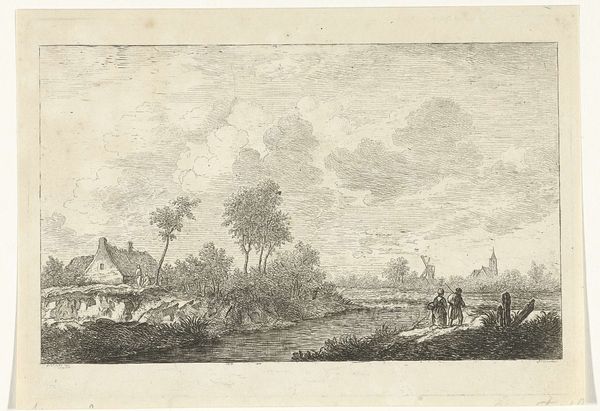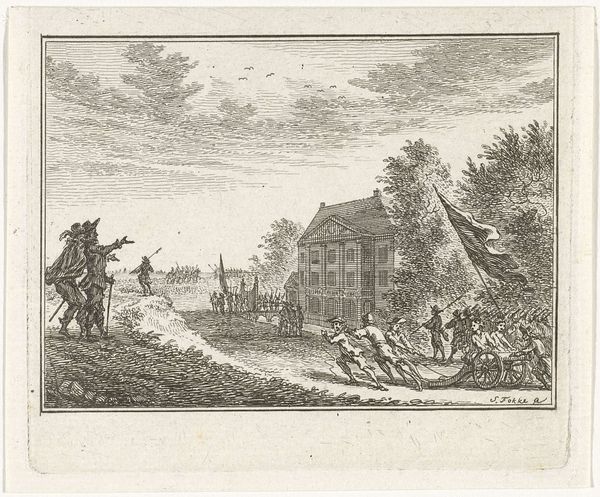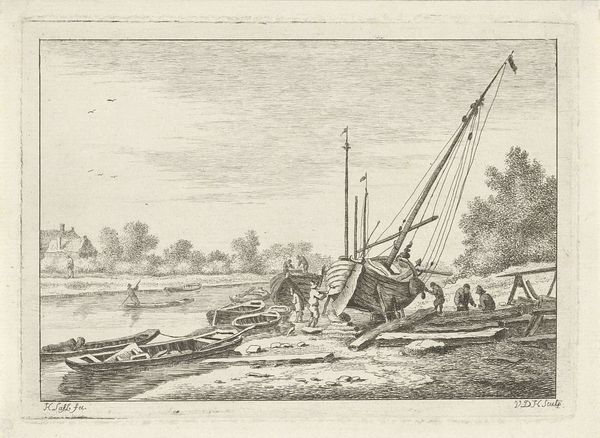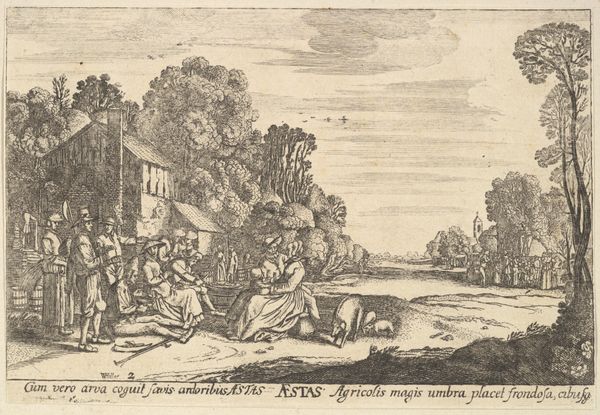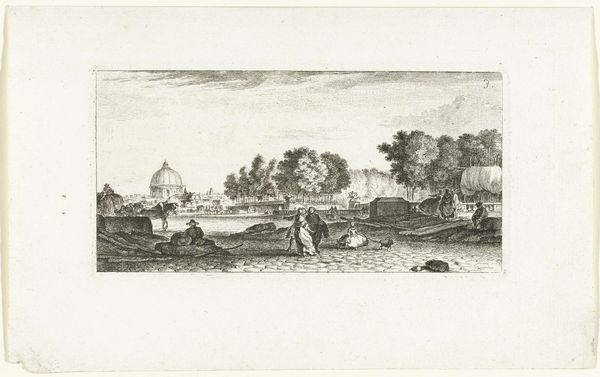
print, engraving
#
dutch-golden-age
# print
#
landscape
#
genre-painting
#
engraving
Dimensions: height 163 mm, width 210 mm
Copyright: Rijks Museum: Open Domain
Editor: So, here we have "Melkende apen" from around 1720, an engraving by Matthijs Pool. The detail is just amazing, and it's also pretty odd! It gives this impression of a rural scene…but something is clearly off. What strikes you about this piece? Curator: Immediately, the deployment of line impresses. Pool uses an elaborate, almost frantic hatching technique to create the illusion of depth and volume, yet the lines never quite resolve into believable forms. Notice how the foreground, dominated by the murky pond, employs denser cross-hatching, seemingly grounding the composition. But does it succeed in establishing spatial coherence, or does it only call attention to the artifice of representation? Editor: I see what you mean. It's like the detail almost undermines itself. Does this have something to do with the "monkeys milking" idea? Curator: Precisely! The depicted subject provides a frame for examining the conventions of genre painting itself. The absurdity—the monkeys emulating human roles within a bucolic landscape—subverts the viewer's expectation of naturalism, thereby foregrounding the constructed nature of pictorial space. Editor: That’s a fascinating reading. I was so focused on the monkeys, I missed the more subtle critiques within the form itself! Curator: Consider the relationship between the lines describing texture versus those defining the forms. Is the surface celebrated over a deeper spatial concern? By understanding these nuances, we recognize how formal elements articulate conceptual arguments within the artwork. Editor: This has definitely altered my perspective on approaching prints, especially from this period. Thank you for pointing this out!
Comments
No comments
Be the first to comment and join the conversation on the ultimate creative platform.
